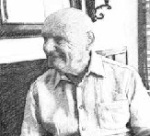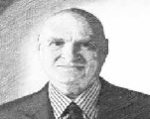Future of proton therapy: Technology, demand drive growth
March 03, 2017
by Leonard Arzt, Executive Director, Nat. Asso. for Proton Therapy
I’ve written many chapters over several decades as an advocate and defender of proton therapy. As the voice of the proton community, I’ve talked with thousands of patients, numerous investors and hospital executives, and countless reporters. From my historical perspective, patient demand will drive strong growth, reimbursement challenges and negotiations will likely continue as insurers deny coverage for certain disease sites while the proton community pushes back aggressively and patients pressure payers. Radiation oncologists have become more open and receptive to the superiority of proton therapy.
Most acknowledge the treatment has tremendous potential, but more work is needed to demonstrate what it can do. I especially look forward to the introduction of the first U.S. heavy ion-carbon facility. Overall, the total number of particle therapy treatment rooms is expected to rise to approximately 1,800 worldwide for patient care. But first, a look in my rearview mirror. I met Robert R. Wilson, Ph.D., on the occasion of Loma Linda’s fifth anniversary.
Dr. Wilson was guest of honor when one of the treatment gantries was named for him. A humble man, he was a heck of a scientist. He was embarrassed when referred to as the “father of proton therapy.” He worked on the
Manhattan Project that developed the atomic bomb. As a team player, he put together an all-star group of physicists that conceived, developed, built and operated Fermi National Accelerator Laboratory (Fermilab). Needless to say, he is the father of proton therapy. He published a paper 71 years ago titled “Radiological Use of Fast Protons" (Journal of Radiology, 1946), establishing the fundamental tenets and techniques being followed today at proton therapy facilities around the world. He championed the peaceful use of atomic energy he helped to unleash. His legacy is generations of successful patient care.
Fast forward to March 17, 1989. The day The Wall Street Journal found out about proton therapy and published the first-ever mainstream news article, on its front page, no less. Questioning cost, benefits and need. The headline screamed: Proton Device to Fight Cancer Is a Boondoggle or a Breakthrough? The occasion was the development of the world’s first hospital-based proton center at Loma Linda University Medical Center. However, in one word, Dr. James M. Slater explained it. “Control … the physician can control the proton. Nobody can control the photon.”
Let me finish with this:
• There were an estimated 1,165,210 new cancer cases in the U.S. in 2016.
• Approximately 60 percent of new cancer cases will receive radiation therapy.
• Approximately 20 percent or more of the 60 percent of new cases will be potential candidates for proton therapy treatment.
• By 2020, 33 percent of the world will be affected by cancer.
• Strong demand for smaller, more affordable, compact machines in the $30 million-to-$ 40 million range represent the future of proton therapy. This will likely put added pressure on the manufacturers to speed up production of equipment.
• There are 25 operating centers in the U.S. About a dozen more are in the pipeline.
• The VA-Stanford University Hadron Radiation Therapy Partnership in Palo Alto, Calif., will consist of proton beam radiation, research and the first carbon beam radiation therapy in the U.S. providing precision particle therapy services to our nation’s veterans and Stanford Medicine patients.
About the author: Len Arzt founded the National Association for Proton Therapy in 1989 and created the National Proton Conference in 2012. He retired as NAPT executive director in December 2014. Arzt is a consultant/senior advisor on the Stantec Architecture particle therapy team.
Most acknowledge the treatment has tremendous potential, but more work is needed to demonstrate what it can do. I especially look forward to the introduction of the first U.S. heavy ion-carbon facility. Overall, the total number of particle therapy treatment rooms is expected to rise to approximately 1,800 worldwide for patient care. But first, a look in my rearview mirror. I met Robert R. Wilson, Ph.D., on the occasion of Loma Linda’s fifth anniversary.
Dr. Wilson was guest of honor when one of the treatment gantries was named for him. A humble man, he was a heck of a scientist. He was embarrassed when referred to as the “father of proton therapy.” He worked on the
Manhattan Project that developed the atomic bomb. As a team player, he put together an all-star group of physicists that conceived, developed, built and operated Fermi National Accelerator Laboratory (Fermilab). Needless to say, he is the father of proton therapy. He published a paper 71 years ago titled “Radiological Use of Fast Protons" (Journal of Radiology, 1946), establishing the fundamental tenets and techniques being followed today at proton therapy facilities around the world. He championed the peaceful use of atomic energy he helped to unleash. His legacy is generations of successful patient care.
Fast forward to March 17, 1989. The day The Wall Street Journal found out about proton therapy and published the first-ever mainstream news article, on its front page, no less. Questioning cost, benefits and need. The headline screamed: Proton Device to Fight Cancer Is a Boondoggle or a Breakthrough? The occasion was the development of the world’s first hospital-based proton center at Loma Linda University Medical Center. However, in one word, Dr. James M. Slater explained it. “Control … the physician can control the proton. Nobody can control the photon.”
Let me finish with this:
• There were an estimated 1,165,210 new cancer cases in the U.S. in 2016.
• Approximately 60 percent of new cancer cases will receive radiation therapy.
• Approximately 20 percent or more of the 60 percent of new cases will be potential candidates for proton therapy treatment.
• By 2020, 33 percent of the world will be affected by cancer.
• Strong demand for smaller, more affordable, compact machines in the $30 million-to-$ 40 million range represent the future of proton therapy. This will likely put added pressure on the manufacturers to speed up production of equipment.
• There are 25 operating centers in the U.S. About a dozen more are in the pipeline.
• The VA-Stanford University Hadron Radiation Therapy Partnership in Palo Alto, Calif., will consist of proton beam radiation, research and the first carbon beam radiation therapy in the U.S. providing precision particle therapy services to our nation’s veterans and Stanford Medicine patients.
About the author: Len Arzt founded the National Association for Proton Therapy in 1989 and created the National Proton Conference in 2012. He retired as NAPT executive director in December 2014. Arzt is a consultant/senior advisor on the Stantec Architecture particle therapy team.


